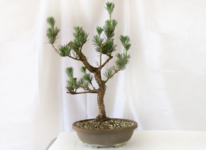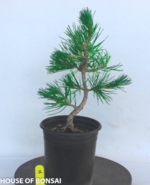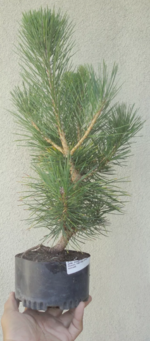Is it largely looking for the same things (nebari, movement, trunk thickness, etc.)? Or are there JBP-specific considerations?
JBP does not readily bud on bare wood so trees with long. bare branches and trunks can pose problems when trying to create ramification. It can be done but needs reasonably advanced techniques. Look for trees with enough low branches to provide some structure and/or place to chop an overly long branch. Look for branches that have shorter side branches closer to the trunk so you can chop over long parts and still have healthy needles to regrow the branch.
Pines bud in 'whorls' - bunches of branches at the same level. If allowed to grow, those whorls quickly create inverse taper. Check for whorls of branches and inverse taper in both trunks and branches. It may be possible to remove affected parts and regrow from a lower branch. If it does not appear possible to chop to remove swollen parts and still have some healthy needles to regrow from then don't bother.
Trunk and branch taper is important. Probably more important than species that bud easily because we are limited to replacing thick parts with existing branches or hoping for back buds on younger, bare sections when working with pines.
JBP is quite flexible so we can bend trunks that would snap if they were most deciduous.
From the 4 pictures:
1. appears to have reasonable trunk taper - has probably already had 1 or more trunk chops. Plenty of healthy needles closer to the trunk so options to reduce length and build ramification. Some whorls of branches in the upper section?
2. older tree but very little taper in the trunk - possible literati (but do not underestimate how difficult literati can be). Longer, bare parts but still enough inner shoots to make something given a few years. Probably not beginner material.
3. much younger than the first 2. Plenty of healthy needles close to the trunk to produce new buds if required. 2 branches at second level - looks OK now but will leave a gap if/when 1 is removed to avoid inverse taper. More whorls toward the top that will need to be addressed at some stage.
4. another younger tree. Plenty of needles close to the trunk to chop to. Whorls of branches still present - check for inverse taper and possibility to chop. Little taper in the trunk - look for options to chop and regrow trunk.
Younger trees will usually give you more options for shaping and development and a chance to learn pine management before the tree gets out of control.








